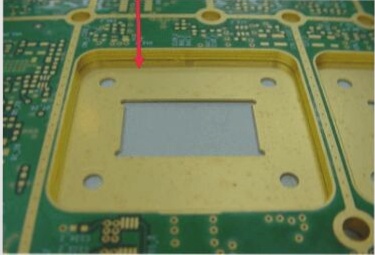—
Due to their small size and unique requirements, there are few ready-made printed circuit board standards for the rapidly expanding wearable IoT market. Before these standards became available, we relied on our knowledge from board-level development and manufacturing experience to address the unique emerging challenges. Three key areas demand our particular focus: circuit board surface materials, RF/microwave design, and RF transmission lines.

—
PCB Board Materials
1. PCB boards typically consist of laminates fabricated from materials such as fiber-reinforced epoxy (FR4), polyimide, Rogers, or other laminates. The insulating material between layers is called prepreg. Wearable devices demand high reliability, posing a challenge for PCB designers choosing between cost-effective FR4 and more advanced, albeit pricier materials.
2. For applications requiring high-speed and high-frequency, FR4 may not be suitable due to its dielectric constant (Dk) of 4.5. In contrast, Rogers 4003 has a Dk of 3.55, and Rogers 4350 has a Dk of 3.66. Dk refers to the ratio of capacitance or energy between conductors in the material to that in a vacuum. At high frequencies, Rogers 4350 is preferable due to its lower Dk, reducing insertion loss.
3. Wearable devices typically feature 4 to 8 layers. An 8-layer PCB should provide adequate ground and power planes, with routing layers sandwiched between, minimizing crosstalk ripple and electromagnetic interference (EMI). Designers often place large ground planes close to power distribution layers to minimize system noise, crucial for RF subsystems.
4. Compared to Rogers materials, FR4 exhibits higher dissipation factor (Df), especially at high frequencies. High-performance FR4 can achieve a Df as low as 0.002, significantly better than standard FR4. Rogers, in comparison, achieves a Df of 0.001 or less, reducing insertion loss in high-frequency applications.
Manufacturing Challenges
5. Wearable PCBs require stringent impedance control, crucial for signal transmission quality. Previous standards allowed ±10% tolerance for signal traces, insufficient for today’s high-frequency circuits. Current requirements demand ±7% or even ±5% tolerance, impacting manufacturing complexity and limiting suitable suppliers.
6. Rogers UHF laminates maintain dielectric constant tolerances within ±2%, with some products achieving ±1%. These materials offer low insertion loss, critical for high-frequency applications, and are favored in RF/microwave circuits exceeding 500MHz.
RF/Microwave Design Considerations
7. Portable technology and Bluetooth have expanded RF/microwave applications in wearables. Today’s frequencies, ranging from 10GHz to 25GHz for UHF, demand meticulous attention to wiring layout, signal separation, and high-frequency trace isolation from ground.
8. Key considerations include implementing bypass filters and decoupling capacitors close to power pins to suppress noise ripple and ensuring balanced transmission lines to minimize impedance mismatches and signal distortion.
9. RF transmission lines must maintain controlled impedance for effective signal transmission. Methods like microstrip, suspended striplines, and coplanar waveguides are employed for routing RF signals, offering varying degrees of isolation and noise suppression.
10. For example, suspended striplines are preferred for RF signal routing on wearable PCBs, providing effective grounding between power planes. Coplanar waveguides offer improved isolation for closely routed RF traces, enhanced by using “via fences” to reduce noise levels.
11. Considerations such as dielectric constants and the use of blind vias to enhance decoupling performance are crucial in designing RF PCBs, ensuring optimal signal integrity and minimizing interference.
—
This revised version aims to maintain the technical details while improving readability and clarity of expression.



